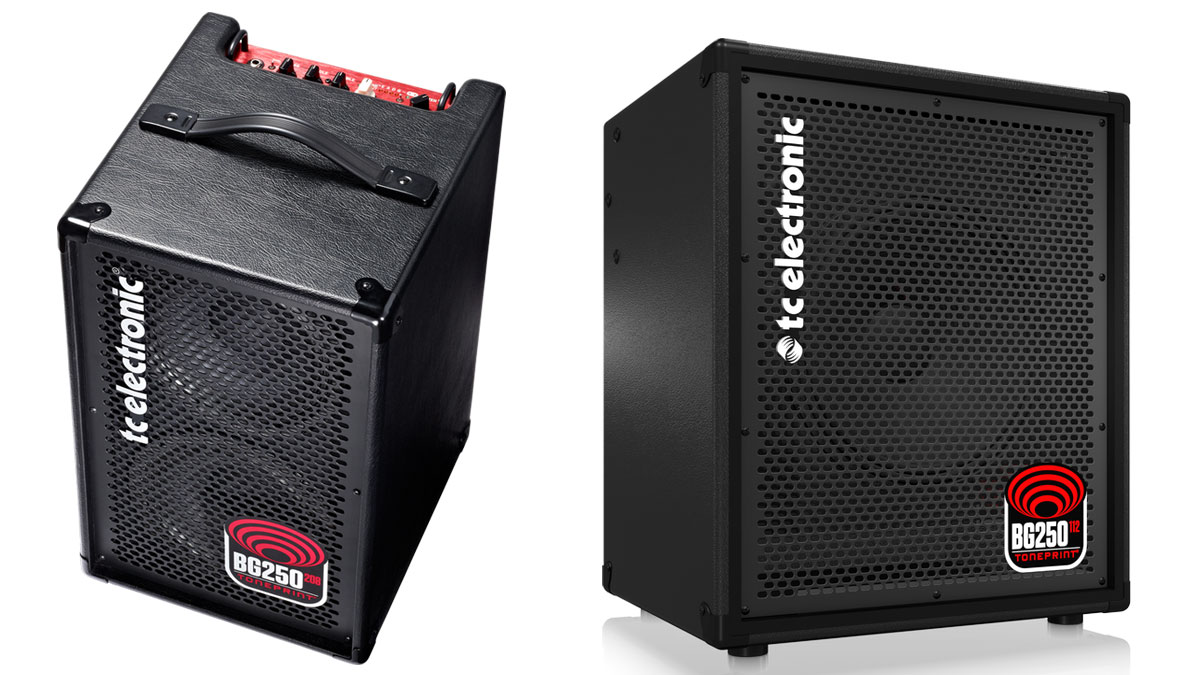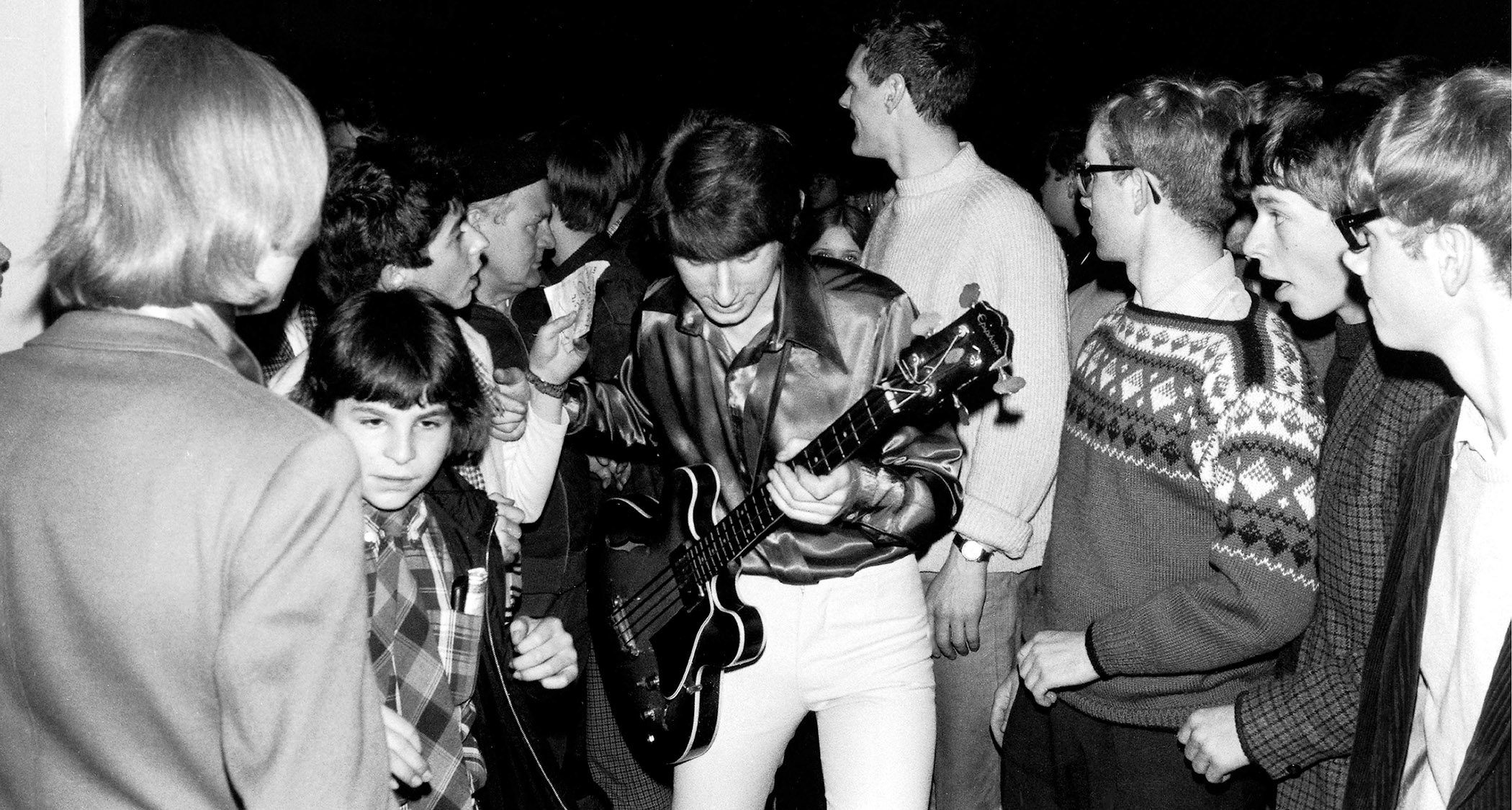Guitar World Verdict
The TC BG250 combos are lightweight, tone-full amps with all the features you need for practicing, recording, or light performance.
Pros
- +
Good low-volume tone; great features in a compact form
Cons
- -
Heavy compression, easily activated
You can trust Guitar World
Building on the success of its BG250-115 combo, Denmark’s TC Electronic brings out three new models: a 1x12, 2x10, and 2x8, all BG250-powered, and featuring TC’s awesome Tone Print effect technology.
The super-lightweight 250-watt amps boast flexible tone shaping and convenient features that make them ideal woodshedding tools—but the effect capabilities help this diminutive trio stand out in the crowd. We checked out two of the models, the 1x12 BG250-112 and the 2x8 BG250-208.
The BG250 power plant is a Class D amp with a basic control layout. The 112 is a closed system, with the 12" driver taking the head’s full power, while the 208 allows connecting an external 8-ohm cab, for a minimum 4-ohm load. The BG series features what TC calls Dynamic Tone Contouring, which assigns different frequencies to boost and cut with the 3-way EQ.
The bass control cuts up to 24dB at 80Hz and boosts up to 15dB at 100Hz. The mid control is set for –24dB at 500Hz and +15dB at 800Hz, while treble on the 112 model gives you –24dB at 1.8kHz and +15dB at 2.5kHz. treble is slightly different on the 208 model, cutting up to 24dB at 1.4kHz.
The BG208 incorporates the minuscule BG250H head into a vertical 2x8 cab, while the other BG models have an expanded version of the amp built into larger cabs. The smaller BG provides a gain switch for active/passive instruments, and only one Tone Print control, while the larger amp offers a dedicated gain knob and two Tone Print controls. Although two distinct Tone Prints can be stored, you can only use one at a time.
Both amps feature a built-in tuner that can handle the range of a typical 6-string bass, a pre/post-EQ balanced line out via the xlr jack, mute switch, a ⅛" stereo aux input for iPods and such, and a speaker-defeating ⅛" stereo headphone-out jack for silent practicing. There is a USB port so you can connect the BG250 to a computer for loading and editing Tone Prints, and a footswitch pedal input for remote control of the mute and Tone Print functions. The front-ported cabs are loaded with TC custom drivers and covered with black Tolex, and are surprisingly lightweight.
Cranking up the pair at home, I was impressed with the range of sounds available from what seemed to be a fairly basic EQ section. Obviously the Danes put a lot of thought into the frequency centers; going from ultra-modern slap tones to burnished thump was a piece of cake (or perhaps Danish?). Naturally the 112 has more bottom than its little bro, but connecting an 8-ohm cab to the 208’s extension jack gave the mini-me a powerful punch.
All the latest guitar news, interviews, lessons, reviews, deals and more, direct to your inbox!
But keep your expectations reasonable: While well suited for practice, recording, and low-volume rehearsals and gigs, these amps are not going to stand up to the demands of loud rock music. The built-in compression saves you the trouble of buying a new amp every time you push it to the limit, but it is audibly present when you drive the amp loud.
However, at a living-room rehearsal with a five-piece rock band (at gentlemen’s volume), the tiny BG250-208 held its own— giving my passive P-Bass enough oomph to keep the boys in line with a warm, vintage vibe. For one of the harder-edged tunes, I swapped out the default TC Chorus effect Tone Print and loaded up some Tube Drive.
The free Tone Print iPhone app beamed the effect to the amp without a hitch, and the syrupy chorus gave way to a gritty saturated tone. In addition to spending time with these combos, I have been using several TC Tone Print Enabled pedals for roughly one year, and the Tone Print app has proven consistently reliable.
The larger cabinet of the 112 model kicks up the sound pressure level a few notches, producing gig-worthy volume for an acoustic-based act in a small venue. The BG250 line also includes 1x15 and 2x10 configurations, and while largely uniform, TC has tweaked the EQ center frequencies for each model ever so slightly to better match the response of the speakers and cabinet design.
Specs
Street BG250-208, $500; BG250-112, $350
Inputs ¼" instrument, stereo ⅛" aux, USB, footswitch
Outputs ¼" stereo headphone, xlr balanced line out with pre/post EQ, external-speaker jack on BG250-208
Controls Gain, Bass Middle, Treble, Tone Print, Master, Mute
Tuner Built in, always active
Power 250 watts rms @ 4Ω
Speakers BG250-112, TC custom 12" driver, TC custom tweeter; BG250-208, two TC custom 8" drivers
Dimensions BG250-112, 18” x 14.8” x 21.3”; BG250-208, 11.5” x 12.6” x 18.3”
Weight BG250-112, 35 lbs; BG250-208, 26 lbs
Made in China

